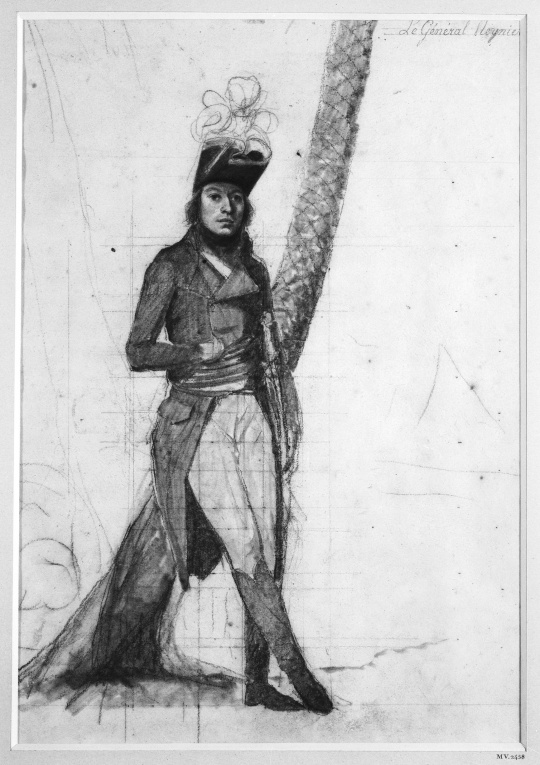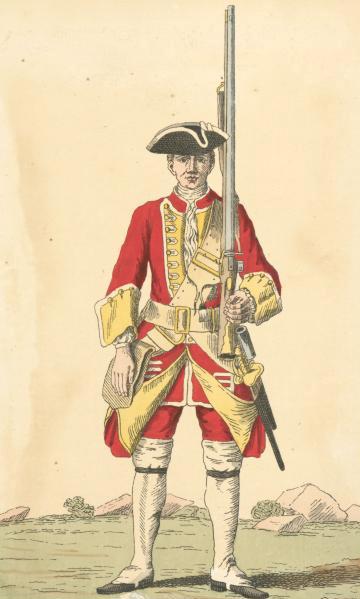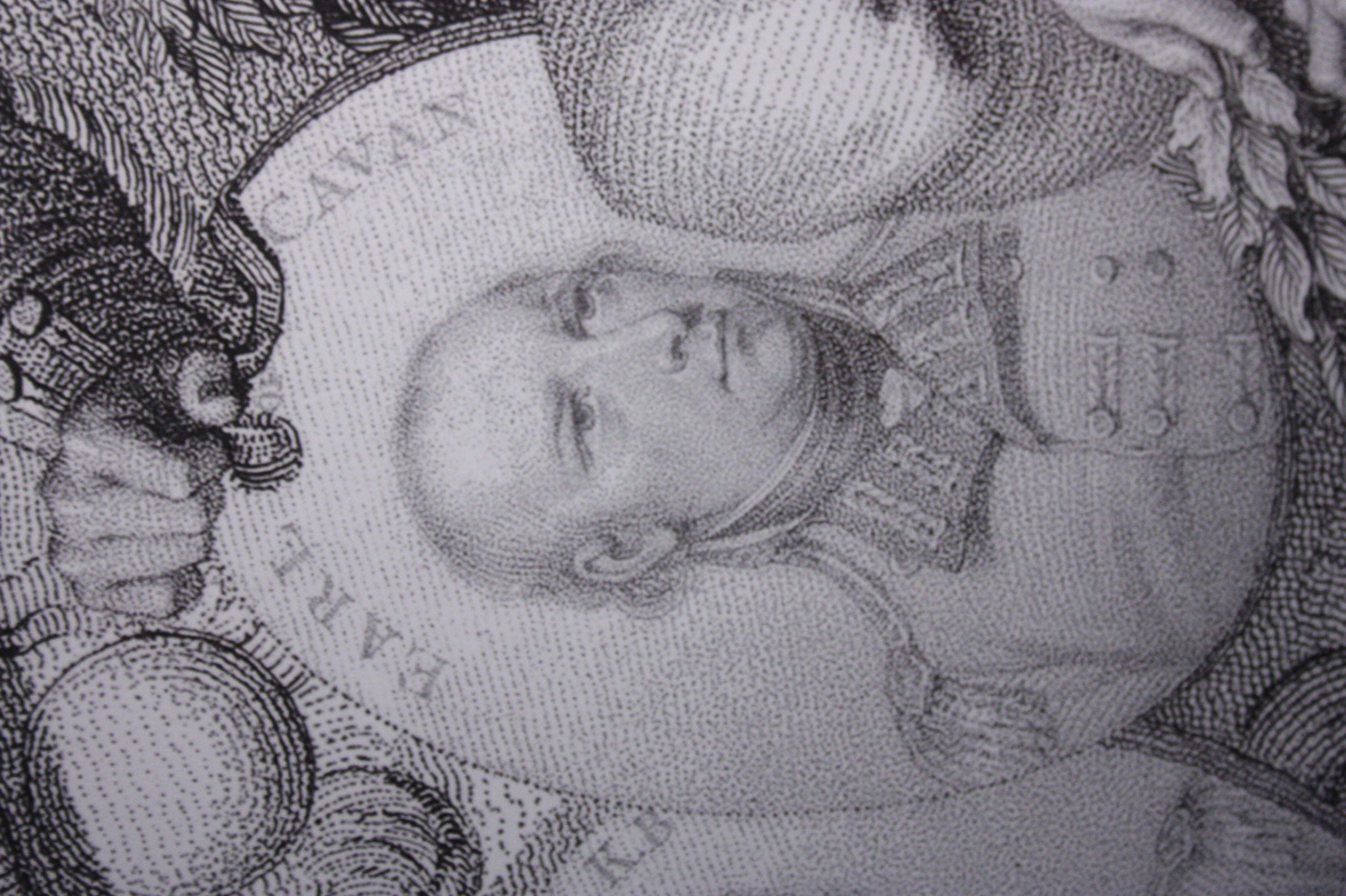|
Battle Of Alexandria (1801)
The Battle of Alexandria, or Battle of Canope, was fought on 21 March 1801 between the army of Napoleon's French First Republic under General Jacques-François Menou and the British expeditionary corps under Sir Ralph Abercromby. The battle took place near the ruins of Nicopolis, on the narrow spit of land between the sea and Lake Abukir, along which the British troops had advanced towards Alexandria after the actions of Abukir on 8 March and Mandora on 13 March. The fighting was part of the French campaign in Egypt and Syria against the Ottoman Empire, which began in 1798. Prelude Following Lanusse's reverse at Mandora, Menou finally arrived from Cairo to take direct command of French forces, and determined to attack on 21st March. François Lanusse would lead on the left with the brigades of Valentin and Silly, supported by the infantry Divisions of Antoine-Guillaume Rampon in the centre and Jean Reynier on the right. The British position on the night of 20 March exte ... [...More Info...] [...Related Items...] OR: [Wikipedia] [Google] [Baidu] |
Philip James De Loutherbourg
Philip James de Loutherbourg List of Royal Academicians, RA (31 October 174011 March 1812), whose name is sometimes given in the French language, French form of Philippe-Jacques, the German language, German form of Philipp Jakob, or with the English-language epithet of the Younger, was a French-born British painter who became known for his large marine painting, naval works, his elaborate Scenic design, set designs for London theatres, and his invention of a mechanical theatre called the "Eidophusikon". He also had an interest in faith-healing and the occult, and was a companion of the confidence-trickster Alessandro Cagliostro. Early life Loutherbourg was born in Strasbourg in 1740, the son of an Polish diaspora, expatriate Polish Portrait miniature, miniature painter. Intended for the Lutheran ministry, he was educated at the University of Strasbourg. Paris Rejecting a religious calling, Loutherbourg decided to become a painter, and in 1755 placed himself under Charles-An ... [...More Info...] [...Related Items...] OR: [Wikipedia] [Google] [Baidu] |
Jean Reynier
Jean Louis Ebénézer Reynier (14 January 1771 – 27 February 1814) was a Swiss-French military officer who served in the French Army under the First Republic and the First Empire. He rose in rank to become a general during the French Revolutionary Wars, and led a division under Napoleon Bonaparte in the French campaign in Egypt and Syria. During the Napoleonic Wars he continued to hold important combat commands, eventually leading an army corps during the Peninsular War in 1810–1811 and during the War of the Sixth Coalition in 1812–1813. Background and education Reynier was born on 14 January 1771 in Lausanne to a protestant family, the son of Jacques François Reynier, a physician, and Caroline Chapuis. Through his father he was descended from French Huguenots from the Dauphiné who fled to Switzerland after the revocation of the Edict of Nantes. His brother Jean-Louis-Antoine (1762–1824), a naturalist and archeologist, held government posts in the French administration ... [...More Info...] [...Related Items...] OR: [Wikipedia] [Google] [Baidu] |
42nd Regiment Of Foot
The 42nd (Royal Highland) Regiment of Foot was a Scottish infantry regiment in the British Army also known as the Black Watch. Originally titled Crawford's Highlanders or the Highland Regiment and numbered 43rd in the line, in 1748, on the disbanding of Oglethorpe's Regiment of Foot, they were renumbered 42nd and in 1751 formally titled the 42nd (Highland) Regiment of Foot. The 42nd Regiment was one of the first three Highland Regiments to fight in North America. In 1881 the regiment was named '' The Royal Highland Regiment (The Black Watch)'', being officially redesignated ''The Black Watch (Royal Highland Regiment)'' in 1931. In 2006 the Black Watch became part of the ''Royal Regiment of Scotland''. History Early history After the Jacobite rising of 1715 the British government did not have the resources or manpower to keep a standing army in the Scottish Highlands. As a result, they were forced to keep order by recruiting men from local Highland clans that had been lo ... [...More Info...] [...Related Items...] OR: [Wikipedia] [Google] [Baidu] |
28th (North Gloucestershire) Regiment Of Foot
The 28th (North Gloucestershire) Regiment of Foot was a line infantry regiment of the British Army, raised in 1694. Under the Childers Reforms it amalgamated with the 61st (South Gloucestershire) Regiment of Foot to form the Gloucestershire Regiment in 1881. History Early years The regiment was first raised by Colonel Sir John Gibson, who had served as the Lieutenant-Governor of Portsmouth, as Sir John Gibson's Regiment of Foot on 16 February 1694. It was posted to Newfoundland to protect the colony there, losing many of its men to the extreme cold. The regiment was disbanded in 1697, but reformed under the same colonel in 1702. Posted to the continent during the War of the Spanish Succession the regiment fought at the Battle of Elixheim in July 1705 and at Battle of Ramillies in May 1706. It was then sent to the Spain, losing over half its men at the Battle of Almansa in April 1707, and then took part in the capture of Vigo in October 1719 during the War of the Quadruple A ... [...More Info...] [...Related Items...] OR: [Wikipedia] [Google] [Baidu] |
Richard Lambart, 7th Earl Of Cavan
Richard Ford William Lambart, 7th Earl of Cavan (10 September 1763 – 21 November 1837), styled Viscount Kilcoursie from 1772 to 1778, was a British military commander throughout the Napoleonic era and beyond. He became head of the British Army in Egypt. He suggested to the British government the removal of the obelisk known as Cleopatra's Needle, for long centuries embedded in the sand near Alexandria, Egypt. The undertaking was considered too costly and not taken up until 1877, and the obelisk now stands on the London Embankment to commemorate the conclusion of the Napoleonic Wars. Biography He was born into an Anglo-Irish aristocratic family, the only son of The 6th Earl of Cavan, whom he succeeded in 1778, and his second wife Elizabeth Davies, daughter of William Davies. He was commissioned as an ensign in the Coldstream Guards in 1779. In 1798 he was promoted to Major-General, and in 1800 he commanded a Division in Egypt under Abercromby. In command of a Brigade of Gua ... [...More Info...] [...Related Items...] OR: [Wikipedia] [Google] [Baidu] |
John Cradock, 1st Baron Howden
General John Francis Cradock, 1st Baron Howden (11 August 175926 July 1839) was a British peer, politician and soldier. Life He was son of John Cradock, Church of Ireland Archbishop of Dublin. In 1775 he was admitted to St John's College, Cambridge. In 1777, he was appointed a cornet in the 4th Regiment of Horse, which in 1779 he exchanged to become an ensign in the Coldstream Guards, and in 1781 he was promoted a lieutenant with the rank of captain. In 1785 he purchased a commission as a major in the 12th Dragoons, exchanging this in 1786 for a post in the 13th Foot, where he was appointed lieutenant-colonel in 1789. He commanded the 13th in the West Indies in 1790, and served a second time in the West Indies commanding a battalion of grenadiers in 1793, where he was wounded at the reduction of Martinique and appointed the aide-de-camp of Sir Charles Grey, receiving the thanks of Parliament for his services. In 1795 he was appointed colonel of the 127th Foot, and place ... [...More Info...] [...Related Items...] OR: [Wikipedia] [Google] [Baidu] |
George Ludlow, 3rd Earl Ludlow
General George James Ludlow, 3rd Earl Ludlow GCB (12 December 1758 – 16 April 1842), was a British peer and soldier. Ludlow was the younger son of Peter Ludlow, 1st Earl Ludlow, by Lady Frances, daughter of Thomas Lumley-Saunderson, 3rd Earl of Scarbrough. Military service At the end of Ludlow's service during the American Revolution, he became involved in the Asgill Affair and was a close friend of the victim, who was chosen by lot to go to the gallows. He did all he could to help his friend. Serving in the British Army, he rose to Colonel of the 1st Foot Guards 21 August 1795, and Major General 18 June 1798. In 1801 he served under Abercromby and Hely-Hutchinson in the Egyptian Campaign commanding the Guards Brigade, seeing action at Aboukir, and Alexandria (Canope). He was made Lieutenant General on 30 October 1805. In August 1807 he commanded the 3rd Division in the Copenhagen Campaign under Lord Cathcart. Ludlow was promoted General in June 1814. He was a Regimen ... [...More Info...] [...Related Items...] OR: [Wikipedia] [Google] [Baidu] |
Isthmus
An isthmus (; ; ) is a narrow piece of land connecting two larger areas across an expanse of water by which they are otherwise separated. A tombolo is an isthmus that consists of a spit or bar, and a strait is the sea counterpart of an isthmus. Isthmus vs land bridge vs peninsula ''Isthmus'' and ''land bridge'' are related terms, with isthmus having a broader meaning. A land bridge is an isthmus connecting Earth's major landmasses. The term ''land bridge'' is usually used in biogeology to describe land connections that used to exist between continents at various times and were important for migration of people and various species of animals and plants, e.g. Beringia and Doggerland. An isthmus is a land connection between two bigger landmasses, while a peninsula is rather a land protrusion which is connected to a bigger landmass on one side only and surrounded by water on all other sides. Technically, an isthmus can have canals running from coast to coast (e.g. the Panama ... [...More Info...] [...Related Items...] OR: [Wikipedia] [Google] [Baidu] |
French Campaign In Egypt And Syria
The French campaign in Egypt and Syria (1798–1801) was Napoleon Bonaparte's campaign in the Ottoman territories of Egypt and Syria, proclaimed to defend French trade interests, to establish scientific enterprise in the region. It was the primary purpose of the Mediterranean campaign of 1798, a series of naval engagements that included the capture of Malta and the Greek island Crete, later arriving in the Port of Alexandria. The campaign ended in defeat for Napoleon, leading to the withdrawal of French troops from the region. On the scientific front, the expedition eventually led to the discovery of the Rosetta Stone, creating the field of Egyptology. Despite early victories and an initially successful expedition into Syria, Napoleon and his Armée d'Orient were eventually defeated and forced to withdraw, especially after suffering the defeat of the supporting French fleet at the Battle of the Nile. Preparations and voyage Proposal At the time of the invasion, the ... [...More Info...] [...Related Items...] OR: [Wikipedia] [Google] [Baidu] |
Battle Of Mandora
The Battle of Mandora was a minor battle fought on 13 March 1801 between French forces under François Lanusse and the British expeditionary corps under Ralph Abercromby, during the French campaign in Egypt and Syria. Background The British army, under the command of Lieutenant-General Sir Ralph Abercromby, had been sent to Egypt to remove the French garrison from the region, following Napoleon's departure in August 1799. On 1 March 1801, the British corps, originally consisting of 15,300 men but much affected by disease, carried by a fleet of 175 ships, arrived at the natural harbour of Abu Qir, (known to the British as "Aboukir Bay"), some 23 kilometres (14 miles) from the port city of Alexandria. On 8 March, the British vanguard of 5,500 came ashore by boat, opposed by a French force from the garrison of Alexandria under Louis Friant of some 2,000 drawn up on the sand dunes overlooking the landing beach, an action known as the Second Battle of Abukir. The outcome had esse ... [...More Info...] [...Related Items...] OR: [Wikipedia] [Google] [Baidu] |
Battle Of Abukir (1801)
The Battle of Abukir of 8 March 1801 was the second pitched battle of the French campaign in Egypt and Syria to be fought at Abu Qir on the Mediterranean coast, near the Nile Delta. The landing of the British expeditionary force under Sir Ralph Abercromby was intended to defeat or drive out an estimated 21,000 remaining troops of Napoleon's ill-fated invasion of Egypt. The fleet commanded by Baron Keith included seven ships of the line, five frigates and a dozen armed corvettes. With the troop transports, it was delayed in the bay for several days by strong gales and heavy seas before disembarkation could proceed. The French garrison of Alexandria under General Friant, some 2000 French troops and ten field guns in high positions took a heavy toll of a large British force disembarking from a task-force fleet in boats, each carrying 50 men to be landed on the beach. The British then rushed and overwhelmed the defenders with fixed bayonets and secured the position, enabling a ... [...More Info...] [...Related Items...] OR: [Wikipedia] [Google] [Baidu] |








